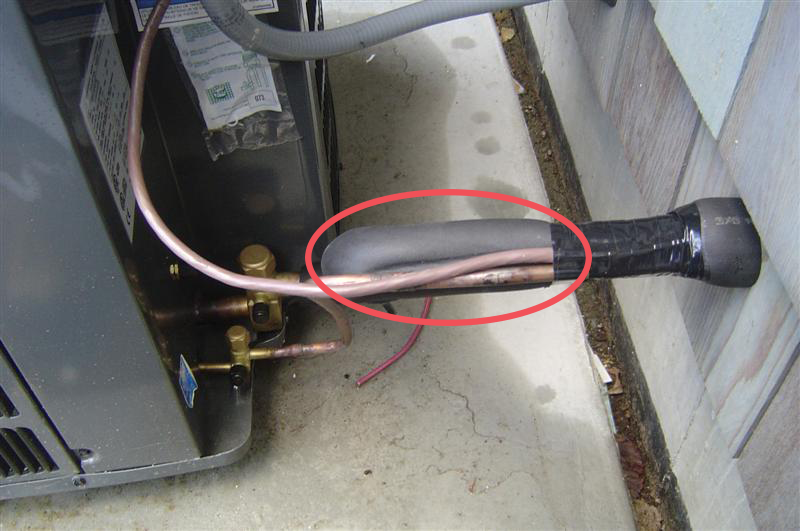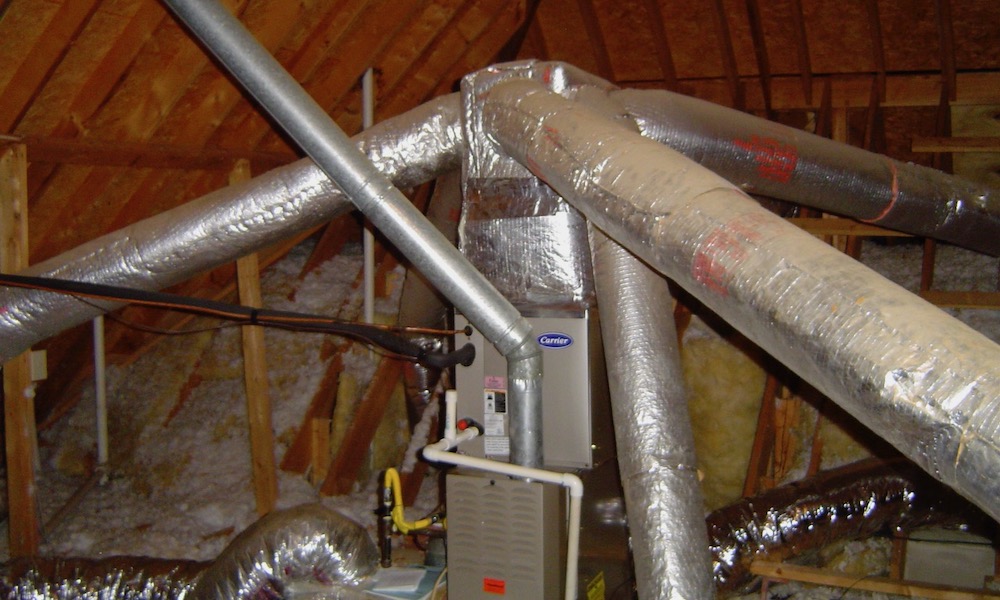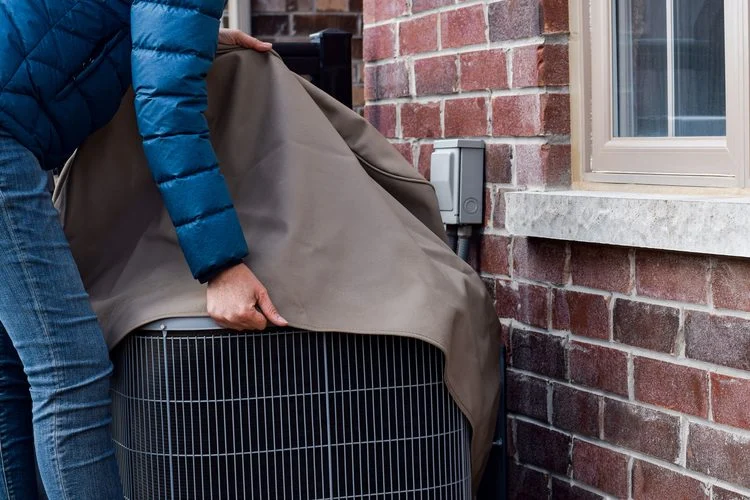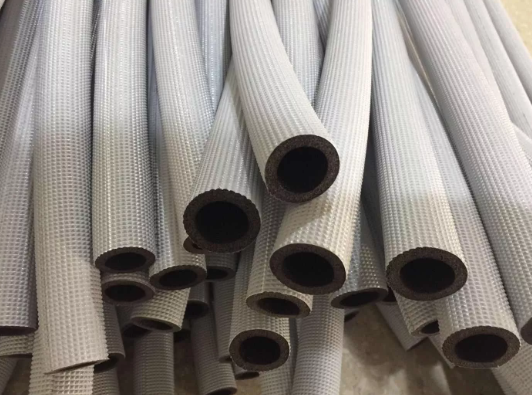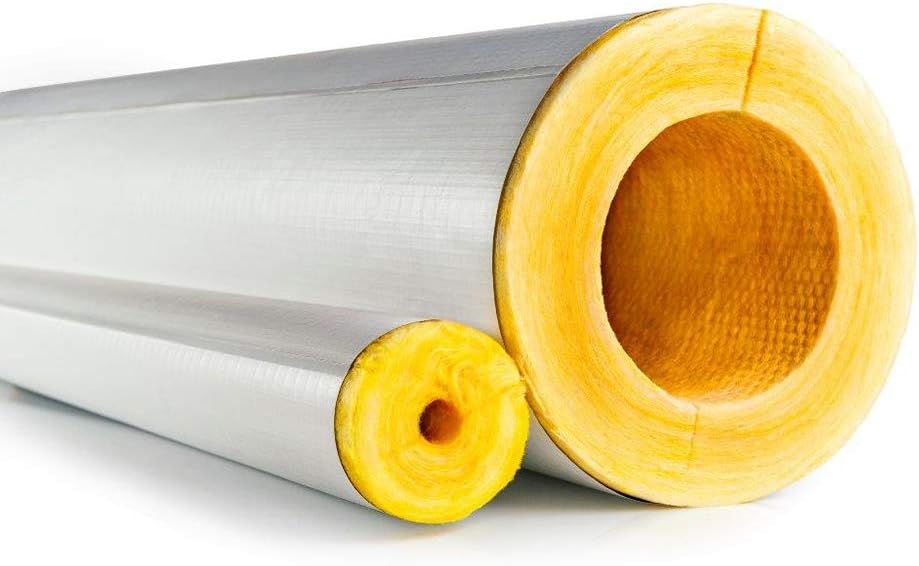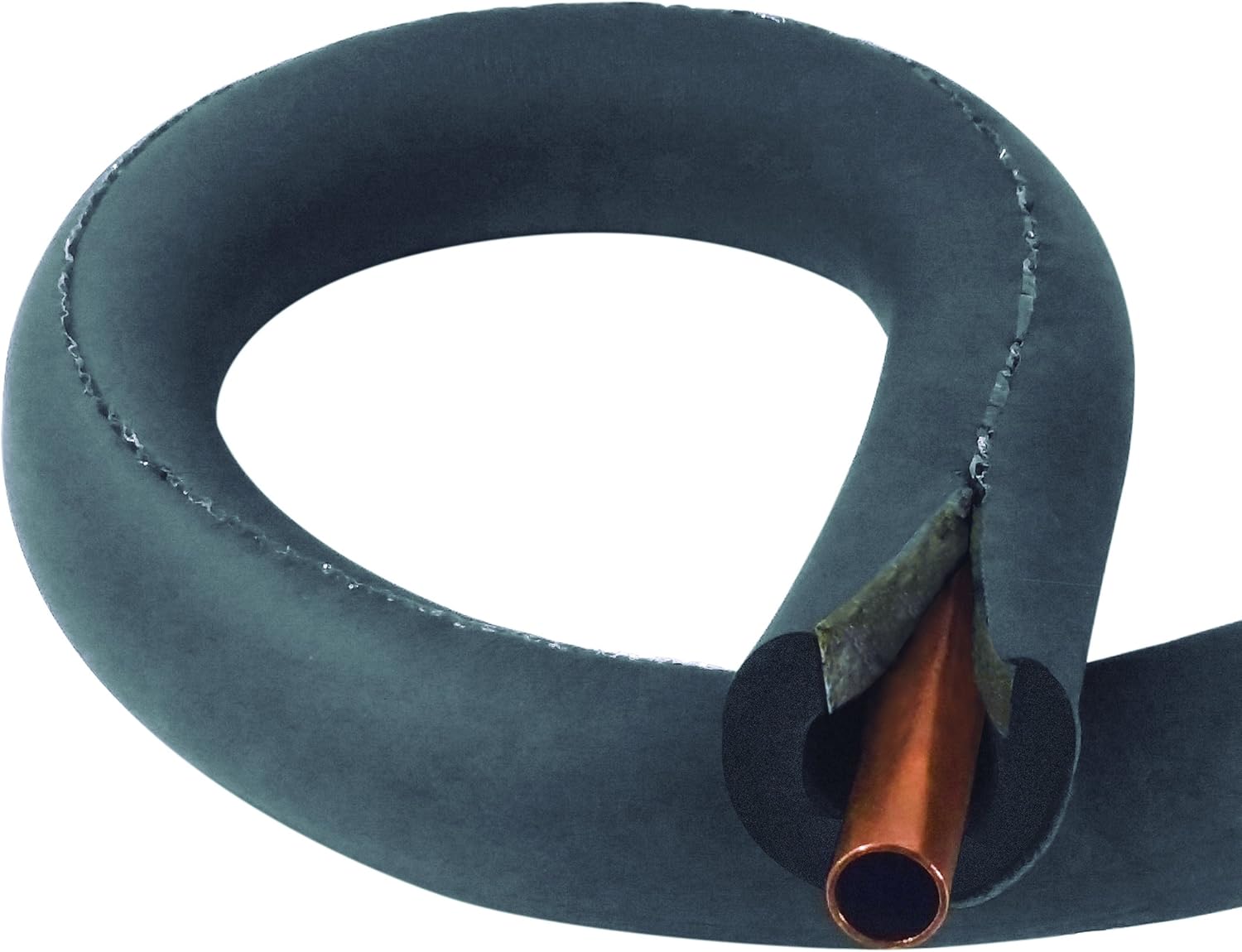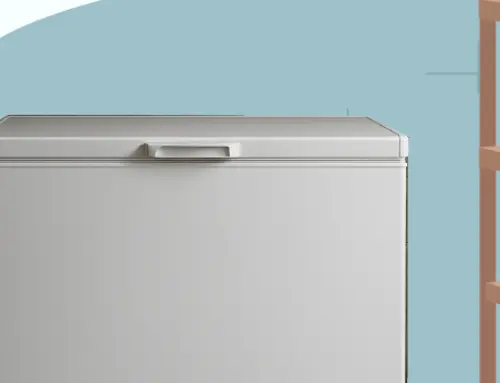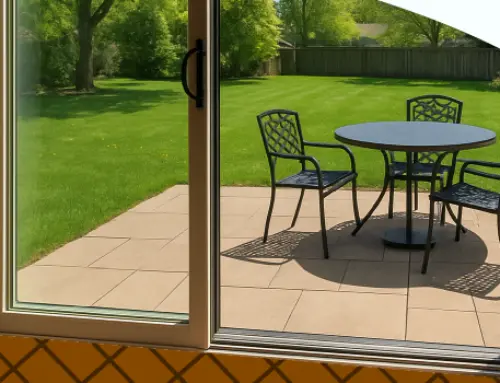Does Pipe Insulation on My AC Unit Help Cool My House?
by Tyler Castle
25.3 min read

If you've ever noticed a bare or crumbling piece of foam on your air conditioner's copper line, you may have wondered whether it really affects how well your home stays cool or how much you pay each month.
The truth is, AC pipe insulation, also known as AC copper pipe insulation, plays a small but important role in your system's overall efficiency, especially during the hot, humid summers across Illinois, Ohio, and Pennsylvania.
As an expert in energy efficiency, we're proud to share our expertise. In this guide, we'll break down how AC pipe insulation works, what happens when it's missing or damaged, and simple ways to replace or upgrade it for better cooling performance and lower energy costs. Let's go!
Key Points of This Article:
- AC copper pipe insulation improves system efficiency by keeping refrigerant cold, reducing energy consumption, and preventing condensation that can lead to rust or water damage.
- Uninsulated or damaged insulation can cause up to 30% energy loss, leading to higher electricity bills, reduced cooling performance, and increased strain on the AC compressor.
- Homeowners should insulate the large, cold suction line and exposed connections, while avoiding insulation on the small, hot line and components like the compressor or fan motor.
- Replacing or upgrading insulation is a simple, cost-effective way to extend the life of your AC system, especially in humid climates like the Midwest, and can be done DIY or with professional help if needed.
How AC Copper Pipe Insulation Keeps Your System Efficient
One of the most effective ways to keep your air conditioner’s pipes properly insulated is by using AC copper pipe insulation.
This material acts as a protective layer that wraps around the copper refrigerant lines, preventing unwanted heat transfer and moisture buildup. It is typically made from materials like foam rubber, polyethylene, or flexible elastomeric rubber, all designed to stand up to outdoor weather and daily wear.
Your air conditioner relies on these copper pipes, called refrigerant lines, to move heat from inside your home to the outdoor unit. The larger pipe carries cold refrigerant gas back to the compressor, while the smaller line transports warm refrigerant to the indoor coil.
When the larger pipe is not insulated, it can absorb heat from the surrounding air before the refrigerant returns to the system. This makes your AC work harder to cool your home, leading to higher energy use, uneven temperatures, and more strain on key components like the compressor.
That is where AC copper pipe insulation makes a difference. It helps your air conditioner in several important ways:
- Increases efficiency: Keeps the refrigerant cold so your system doesn’t waste energy.
- Reduces energy consumption: Allows your AC to cool faster and run shorter, more efficient cycles.
- Protects the compressor: Prevents overheating and unnecessary stress on the system.
- Prevents condensation: Stops moisture from forming on the pipe, reducing the risk of rust, corrosion, and water damage.
In areas with high humidity, like the hot summers in Illinois or the cooler, damp months in Michigan, this type of insulation is especially valuable. It protects against excess moisture, prevents energy loss, and keeps your cooling system performing at its best all year.
Does AC Pipe Insulation Help Cool My House?
AC pipe insulation does help your home stay cooler and your system run more efficiently. Small improvements in insulation can reduce condensation, can protect your pipes from long-term damage, and extend the life of your AC system.
On the other hand, if your pipes are uninsulated, these pipes can quickly absorb heat from the outdoor air before the refrigerant can return to the unit; this reduces your system’s cooling capacity and makes your air conditioner work harder to keep your home at a comfortable temperature.
Even small amounts of heat gain along refrigerant lines due to poor insulation can lead to noticeable 30% energy loss and higher utility bills, according to Summers Plumbing Heating and Cooling.
Proper insulation minimizes that heat gain, helping your system maintain the right pressure and temperature balance. The result is a shorter cooling cycle, steadier indoor comfort, and lower electricity use.
Insulation also helps protect against condensation. When humid air contacts a cold, uninsulated pipe, moisture collects on the surface and can drip onto nearby components or walls. In the long term, this can lead to corrosion, rust, or even mold growth. Keeping the pipe properly insulated prevents these issues and helps extend the life of your air conditioner.
For homeowners in the Midwest, AC pipe insulation is especially valuable. Humid Illinois summers and strong sunlight increase the risk of condensation and heat absorption on exposed copper lines. In contrast, cooler Michigan months can bring sudden temperature swings that affect system efficiency if the lines aren’t properly insulated.
In short, insulating your AC pipes won’t make your air conditioner “blow colder air,” but it helps the system operate at peak efficiency. It’s a small step that improves comfort, lowers energy costs, and keeps your cooling system in good shape season after season.
4 of the Most Important Reasons Why AC Pipes Need Insulation
Keeping your pipes on your air conditioner insulated is one of the easiest ways to help your system work better and last longer. Those pipes carry refrigerant, the liquid that moves heat out of your home, and they need to stay at a steady temperature to do their job efficiently. Here’s why pipes need insulation:
Insulation Maintains Refrigerant Temperature
Insulation helps keep the refrigerant inside the pipes of your air conditioning unit cold as it travels between your indoor and outdoor units. When the temperature stays consistent, your air conditioner doesn’t have to work as hard to move heat out of your home. This helps your system cool more effectively while using less energy.
Insulation Prevents Heat Gain and Condensation
When warm outdoor air touches an uninsulated pipe, heat transfers into the cold refrigerant line, making your AC lose efficiency.
That same temperature difference can also cause moisture to form on the pipe’s surface, which can drip, rust metal parts, or even cause water damage. Insulation acts as a barrier that prevents both heat gain and condensation, keeping your system dry and efficient.
Insulation Protects Against UV Exposure and Physical Damage
Pipes that are exposed to the sun, wind, and rain can wear out faster. Insulation shields the copper from harmful UV rays and helps prevent cracking or weather damage. It also protects against bumps from yard tools or debris that could damage the pipes.
Insulation Supports Energy-Efficient Operation Year-Round
Proper insulation keeps your air conditioner running efficiently during the summer and supports your heat pump in winter. It helps maintain the right refrigerant temperature in all seasons, so your system runs smoothly and uses less energy overall. This means better comfort inside your home and fewer surprises on your energy bills.
What Happens When AC Pipes Aren’t Insulated?
When the insulation on your AC pipes starts to crack, fall apart, or go missing, your system has to work harder to keep your home cool. Over time, that can affect both comfort and long-term performance. We’ve done the research and here are four of the worst things that can happen to your AC system if you don’t choose to protect your unit with insulation:
Reduced Cooling Efficiency
Without insulation, the refrigerant inside the copper pipe of your AC system warms up before it reaches the compressor. This makes it harder for your air conditioner to remove heat from your home, causing it to run longer and struggle to keep up, especially on hot days.
Higher Electricity Usage
The longer your air conditioner runs, the more electricity it uses. Even a small loss in efficiency adds up over time, leading to higher monthly energy bills and less consistent comfort throughout your home.
Leads to Condensation and Corrosion on Pipes
Uninsulated pipes can sweat when humid air touches their cold surface. This moisture can drip onto nearby parts, causing rust or corrosion and making your outdoor unit wear out faster. Keeping the pipes insulated helps prevent these moisture problems.
Shortened AC Lifespan
When your system runs longer and harder than it should, parts like the compressor face extra stress. Over time, that can lead to more frequent repairs and shorten the lifespan of your air conditioner.
Replacing damaged insulation is a simple, low-cost step that helps prevent all these issues. While researching for this blog, we found that even the most advanced insulation costs only $3-$10. That’s less than most cups of coffee!
Proper insulation keeps your AC efficient, protects your investment, and ensures your home stays comfortable through the hottest months of the year.
How Much Can Improper Insulation Cost You?
Proper insulation helps your air conditioner run more efficiently by keeping the refrigerant cold as it moves through the copper pipes. When the refrigerant stays at the right temperature, your system cools your home faster and uses less electricity to do it.
According to the U.S. Energy Information Administration (EIA), air conditioning accounts for about 19% of a typical household’s electricity use. With the national average residential electricity rate at 17.47 cents per kilowatt-hour (kWh) as of July 2025, a home using 899 kWh per month would spend about $157.06 on electricity. Of that, roughly $29.84 per month goes toward cooling. Even small issues like poor insulation could mean spending an extra $20–$30 each month; savings worth keeping in your pocket.
Properly insulating your AC pipes can improve efficiency and save you a few dollars each month. While the savings may seem small, it adds up over time especially when combined with other efficiency habits like regular maintenance and proper thermostat settings. More importantly, good insulation also reduces wear on your system, helping prevent costly repairs and extending the life of your air conditioner.
What Parts of My AC Should, And Should Not Be Insulated?
When you look at the copper pipes that connect to your outdoor air conditioner, you’ll see two of them: one large and one small. These pipes are called refrigerant lines, and knowing which one to insulate is important for keeping your system running efficiently.
When thinking about insulating your system, it can be tough deciphering which one to insulate but knowing the difference is crucial. Here’s what parts of your AC unit you should and should not insulate:
You SHOULD Insulate the Large, Cold “Suction Line”
The large, cold suction line carries refrigerant gas from your indoor coil back to the outdoor compressor. Because the refrigerant inside this pipe is very cold, it easily absorbs heat from the surrounding air.
Insulating this pipe keeps the refrigerant cold, which helps your air conditioner cool your home more efficiently. It also prevents moisture from forming on the pipe’s surface, which can lead to rust or water damage around your outdoor unit.
If the insulation on the suction line is cracked, missing, or deteriorating, your system may have to work harder to keep up; raising energy costs and putting extra strain on the compressor.
You SHOULD Insulate the Exposed Connections Near the Condenser
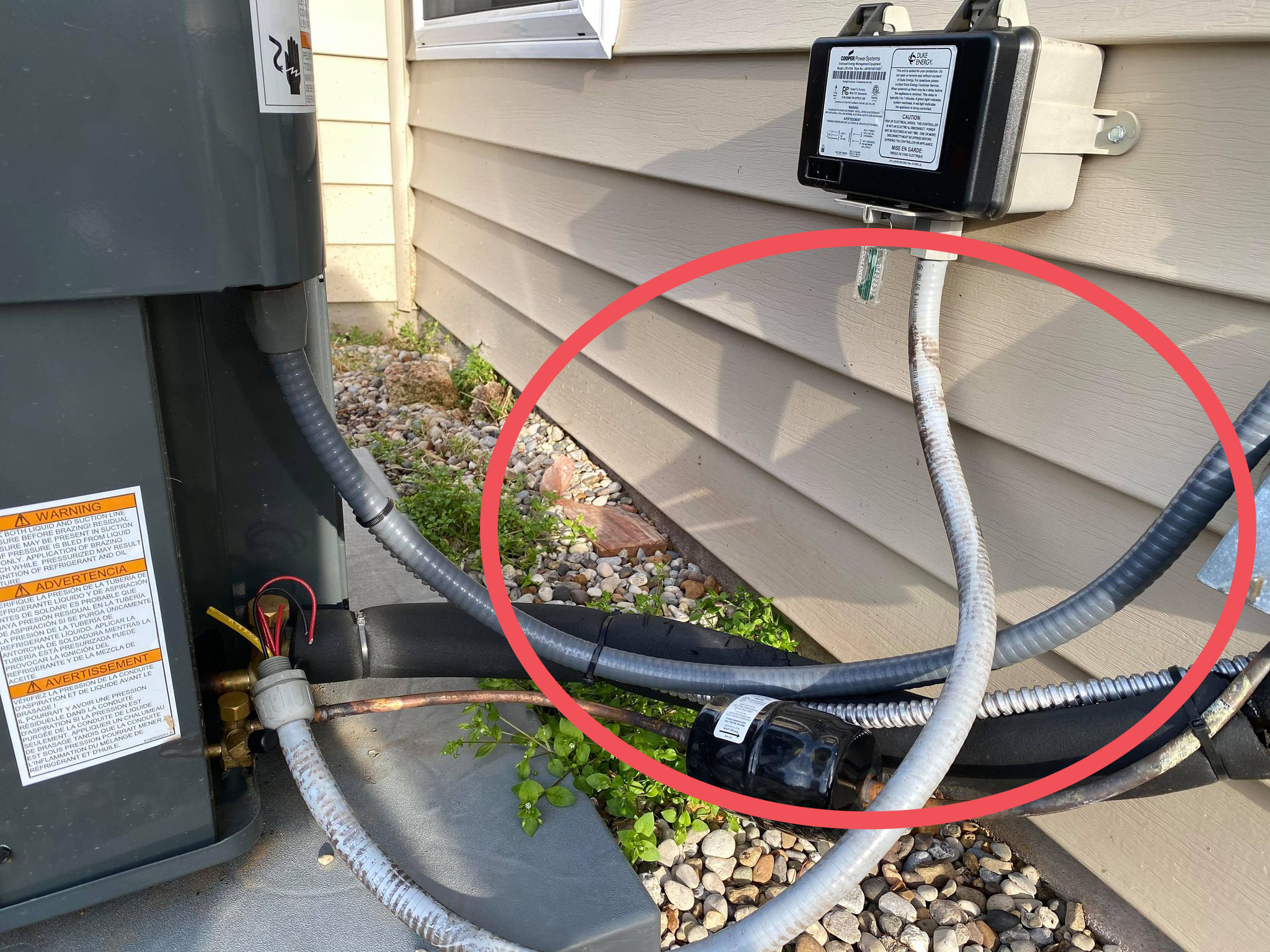
The suction line often connects to fittings or valves near the outdoor unit can also sweat or collect heat. These short exposed metal sections should be covered with insulation to prevent heat gain and corrosion.
You SHOULD Insulate Lines Running Through Unconditioned Spaces
If any part of your refrigerant lines runs through a garage, crawl space, attic, or unfinished basement, those sections should also be insulated. These areas experience more temperature fluctuation, and insulation helps prevent heat gain in summer and frost in winter, especially if you have a heat pump.
Check the Drain Line for OPTIONAL Insulation
Some homeowners also add insulation to the condensate drain line, which carries moisture away from your indoor coil. This helps prevent the line from sweating or dripping onto nearby surfaces in humid conditions. Insulation is optional on this component but helpful if your indoor unit is located in an attic or finished space for temperatures fluctuate.
DO NOT Insulate the Small, Hot Line
The small, hot line carries warm refrigerant from your outdoor unit to your indoor coil. This line doesn’t need insulation because the refrigerant inside is already hot and under high pressure. Insulating it can actually trap heat and interfere with how your system releases excess warmth.
Leaving the small line uninsulated allows the refrigerant to naturally cool before entering your home, which helps maintain the right temperature balance for efficient operation.
DO NOT Insulate or Cover the Compressor or Fan Motor
While it might seem like adding insulation could protect these parts, never cover the compressor housing, fan motor, or electrical components. These parts need airflow to release heat. Blocking them can lead to overheating and early system failure.
The rule is simple: insulate the large, cold suction line and leave the small, hot line bare. Checking these pipes before summer helps keep your AC system running smoothly and efficiently.
5 of the Best and Most Effective Types of AC Pipe Insulation
When it comes to keeping your air conditioner running efficiently, the type of insulation you use on its pipes makes a big difference. Each material offers different levels of protection against heat, moisture, and wear. Here are the most common types used for AC systems and what they’re best for:
1. Closed-Cell Foam
This insulation is thick, dense, and designed to block out moisture. It’s great at stopping condensation from forming on cold refrigerant pipes, which keeps them dry and efficient. Closed-cell foam is one of the most popular choices for air conditioners because it resists water and helps maintain consistent cooling performance.
Best for: Indoor or partially covered outdoor use.
2. Polyethylene (PE)
Polyethylene insulation is lightweight, flexible, and budget-friendly. It’s often used for indoor air conditioning lines where there’s less exposure to sunlight or extreme temperatures. Modern versions are made with a closed-cell design, which means they resist moisture buildup and provide reliable insulation at a reasonable cost.
Best for: Indoor use only
3. Polyurethane (PU)
Polyurethane is a high-performance foam that provides excellent temperature control. It’s often used in projects that require strong insulating power, such as larger cooling systems or areas where energy efficiency is a top priority. It’s durable, long-lasting, and offers one of the best thermal barriers among foam types.
Best for: Both indoor and outdoor use (with UV protection)
4. Fiberglass
Fiberglass insulation is made from fine glass fibers and is known for being durable and heat-resistant. It’s commonly used on hot water or steam pipes but can also work for AC systems in places where fire safety or high heat protection is needed. Because it can handle both hot and cold temperatures, it’s a versatile option in more demanding environments.
Best for: Indoor or covered outdoor use
5. Rubber
Rubber insulation is flexible, weather-resistant, and one of the most durable materials available. It naturally repels moisture and stands up well to UV rays, making it perfect for outdoor use. A specific type called nitrile rubber is often used in HVAC systems because it provides strong protection against both heat and condensation, indoors or out.
Best for: Both indoor and outdoor use
What Type of Insulation Is Best for AC Performance?
The best materials for AC pipe insulation are closed-cell foam and rubber insulation. Both are designed specifically for air conditioning systems and provide strong protection against heat, moisture, and sunlight.
Closed-cell foam insulation has tightly packed air cells that keep moisture out and prevent condensation from forming on the cold copper pipe. It’s lightweight, flexible, and maintains its efficiency even in hot or humid weather.
Rubber insulation, such as nitrile or elastomeric rubber, is highly durable and UV-resistant, making it perfect for outdoor use. It expands and contracts with temperature changes, preventing cracks and gaps over time.
Both materials help keep the refrigerant cold, reduce energy loss, and protect your pipes from corrosion or water damage. For best results, choose insulation that’s at least 3/8 to 1 inch thick and made specifically for HVAC or refrigerant lines.
Can I Use the Same Insulation on a Heat Pump?
Heat pumps use the same type of refrigerant lines as air conditioners, so closed-cell foam or rubber insulation works for both cooling and heating modes. The insulation helps keep the refrigerant at the right temperature whether the system is cooling in summer or heating in winter.
In warm weather, it prevents heat from entering the cold refrigerant line, improving cooling efficiency. In cold weather, it keeps heat from escaping before it reaches your indoor coil, allowing the system to warm your home effectively.
Because heat pumps operate year-round, durable insulation that resists moisture, UV rays, and temperature changes is essential. Using the right material helps prevent condensation, corrosion, and energy loss—keeping your heat pump efficient and reliable in every season.
Signs You Need to Replace or Upgrade Your Pipe Insulation
Your air conditioner’s copper pipes are exposed to the elements year after year. Over time, the insulation around those pipes can wear out, fall apart, or lose its effectiveness.
Knowing what to look for can help you catch small problems early and avoid bigger issues like wasted energy or costly repairs. Here are the most common signs that your AC pipe insulation needs attention:
1. Cracked, faded, or missing insulation
The most obvious warning sign is when the foam or rubber insulation looks dry, brittle, or cracked, or if it’s missing altogether. Damaged insulation can’t properly block heat or moisture.
When that happens, the refrigerant inside your pipes warms up before it reaches the compressor, making your air conditioner work harder to cool your home. Replacing old insulation restores efficiency and helps protect your system from unnecessary strain.
2. Visible sweating or icing
If you see water droplets or frost forming on the larger copper pipe (the suction line), that’s a red flag. Moisture or ice means the insulation is no longer keeping warm air away from the cold refrigerant inside.
This can lead to rust, corrosion, and water damage around your outdoor unit. During humid Midwest summers, even a small gap in insulation can cause condensation to form quickly.
3. Rising energy bills
When your air conditioner has to run longer to achieve the same level of cooling, you’ll likely notice it on your utility bill.
Damaged or missing insulation reduces efficiency, forcing your system to use more electricity. If your energy costs suddenly climb even though your usage habits haven’t changed, the need for insulation could be part of the problem.
4. Uneven cooling indoors
If some rooms in your home feel warmer than others, or your system struggles to maintain consistent temperatures, your refrigerant lines may not be operating as efficiently as they should.
Poor insulation affects how effectively your AC transfers heat, leading to uneven cooling and reduced comfort.
5. Lines exposed directly to sunlight
Exposure to sunlight, rain, and temperature changes causes insulation to deteriorate faster. In Midwest states, strong summer sunlight and fluctuating seasonal temperatures can break down foam or rubber insulation in just a few years.
If you can see the copper line exposed to the sun, it’s time to replace or upgrade to UV-resistant insulation that can handle outdoor conditions.
6. Rodents or large bugs entering your home
If you’ve noticed mice or insects finding their way indoors, it could mean there are gaps or openings where your refrigerant lines enter the house.
These small entry points let pests in, but they can also let indoor heat escape and outdoor air leak in. Replacing worn insulation and sealing those openings can help keep pests out while improving your home’s overall energy efficiency.
7. Cold drafts near windows or walls
Feeling cold air seeping in around windows, walls, or the area where your AC lines run could be another sign that your insulation isn’t sealing properly.
Drafts mean your home is losing conditioned air and allowing outside air in, which can drive up your heating and cooling costs. Upgrading insulation and sealing any gaps around pipes, windows, and doors will help keep your home more comfortable and energy efficient.
DIY Insulation Solutions
While professional AC copper pipe insulation is the most reliable and long-lasting choice, there are also several do-it-yourself options you can use to help protect your air conditioner’s pipes and reduce heat loss. These methods are simple, effective, and great for quick improvements around your home.
1. Blankets or towels
Wrapping old towels or thick blankets around the large, cold suction line can help reduce heat transfer and limit condensation. Secure the material with tape or zip ties to hold it in place. Just remember to check it occasionally and replace it if it becomes damp, since fabric can hold moisture over time.
2. Foam pool noodles or Styrofoam tubing
Foam pool noodles are made from similar material as pipe insulation and can easily be cut lengthwise to fit around the pipe.
Tape the seam closed to keep it snug. Styrofoam tubing from packaging can also be repurposed as a quick insulation sleeve, though it’s best used in shaded areas since it can deteriorate under direct sunlight.
3. Bubble wrap and plastic film
A layer of bubble wrap sealed with weatherproof tape can create a temporary barrier against heat and humidity. The air pockets in the wrap help reduce direct heat exposure. For better results, add a thin plastic layer over it to protect against rain and sunlight.
4. Reused foam pipe insulation
If you have leftover foam pipe insulation from a plumbing or heating project, you can easily adapt it for your AC lines. Cut it to the right length, wrap it around the copper pipe, and seal the seam with outdoor-rated tape. Even a small amount of proper foam insulation can noticeably improve efficiency.
5. Add simple weather protection
If your temporary insulation is exposed to the elements, cover it with aluminum foil or plastic wrap. This layer adds UV and moisture protection, helping your DIY solution last longer.
Remember, DIY insulation can be a great way to enhance performance and protect your system between maintenance visits. However, it’s still best to replace temporary materials with professional-grade closed-cell foam or rubber insulation for long-term results. These materials are designed to resist moisture, heat, and weather exposure while keeping your air conditioner running at peak efficiency.
How to Insulate AC Pipes the Right Way
Replacing the insulation on your air conditioner’s copper pipe is a simple project most homeowners can handle in under an hour. Follow these steps to keep your system running efficiently and protected from the elements.
Step 1: Turn off your air conditioner: Always start by switching off power to your AC unit. This keeps you safe while working near electrical parts and moving components.
Step 2: Clean the copper pipe: Find the large, cold copper pipe (the suction line). Wipe it down with a towel to remove dirt or moisture so the new insulation will stick properly.
Step 3: Remove old insulation: If the old foam is cracked, crumbling, or missing pieces, carefully cut it away with a utility knife. Take your time to avoid scratching the pipe or cutting nearby wires.
Step 4: Choose the right insulation: Use closed-cell foam or rubber insulation, which holds up well outdoors and keeps moisture out. These materials are specifically designed for air conditioners and refrigerant lines.
Step 5: Fit the new insulation: Wrap the new insulation around the large copper pipe so it fits snugly, but not too tight. Position the seam along the bottom of the pipe so rainwater can drain off easily. Cut the insulation to size with scissors or a knife for a clean fit.
Step 6: Seal the insulation: If your insulation has an adhesive strip, peel off the backing and press the edges together firmly to create a tight seal. Make sure there are no gaps where warm air or moisture can get in.
Step 7: Secure the insulation: Use zip ties or outdoor-rated tape to hold the insulation in place, especially at the ends and around bends. Keep them snug, but not so tight that they squeeze the foam.
Step 8: Add sun and weather protection: Wrap the insulation with UV-resistant foil tape if the pipe is exposed to direct sunlight. This prevents cracking and fading over time.
Step 9: Seal where the pipe meets your home: Apply silicone caulk or duct seal putty around the opening where the pipe enters the house. This keeps out air, moisture, and small pests.
Replacing your AC pipe insulation is a small task that pays off in big ways. It helps your system stay efficient, prevents condensation, and protects your investment for years to come.
Insulating your AC pipes is a great way to save money and maintain your system, but safety always comes first. If you notice refrigerant leaks, electrical issues, or anything that looks damaged or unusual, it’s best to stop and call a licensed HVAC professional. They can inspect the system safely and make sure everything is working as it should.
When to Call a Professional for Your AC Pipe Insulation
While replacing insulation is a simple task for many homeowners, there are times when calling a licensed HVAC professional is the smartest and safest choice. A technician has the right tools, experience, and safety training to spot problems that may not be visible to the untrained eye.
1. You notice signs of a refrigerant leak
If you see oily spots, frost buildup, or hear a hissing sound near the copper lines, stop right away. These can be signs of a refrigerant leak, which should only be handled by a certified technician. Refrigerant is under high pressure and can be dangerous if released or handled incorrectly.
2. The copper line looks corroded or damaged
If the pipe itself appears rusted, kinked, or worn through, insulation alone won’t solve the problem. A professional can check for deeper issues like corrosion or line damage that may affect system performance or safety.
3. Your system still struggles to cool after re-insulating
If your air conditioner is still running constantly, not cooling evenly, or producing warm air even after replacing the insulation, it may point to another problem—such as low refrigerant, dirty coils, or restricted airflow. An HVAC expert can perform a full system check to find the cause.
4. You’re unsure about what you’re seeing
If you’re not confident identifying the suction and liquid lines, or you’re simply not comfortable working around your AC unit, there’s no harm in calling a professional. In fact, most HVAC companies can replace or upgrade pipe insulation quickly and at a low cost during a regular maintenance visit.
5. You’re due for routine maintenance
If it’s been a year or more since your system was last serviced, this is a great time to schedule a tune-up. During the visit, a technician can inspect your refrigerant lines, check system efficiency, and replace worn insulation if needed.
Getting professional help when something doesn’t look right can save you time, money, and frustration later. A quick inspection now can prevent larger repairs, protect your air conditioner’s warranty, and keep your home cool and comfortable through the season.
FAQs
Can adding or replacing insulation improve an older AC system?
Yes. Replacing worn or missing insulation helps an older air conditioner run more efficiently by reducing heat loss and keeping refrigerant at the right temperature. It won’t make the unit brand new, but it can noticeably improve cooling performance and lower energy use.
How much insulation do I need for optimal AC performance?
Most residential systems need insulation about ¾ inch thick on the large suction line. The insulation should cover the entire exposed copper pipe without gaps or loose seams to keep the refrigerant temperature stable.
Will adding insulation to my home reduce noise from the outside?
Yes, to some extent. Insulation primarily helps control temperature, but it also absorbs some sound. Adding insulation in walls, attics, and around ducts can reduce outdoor noise and make your home quieter.
How often should I replace outdoor AC pipe insulation?
Typically every 5 to 10 years, or sooner if it looks cracked, faded, or damaged. Sunlight, rain, and temperature changes cause insulation to deteriorate faster, especially in areas with hot summers or harsh winters.
Will insulation stop my line from sweating or icing?
Yes. Proper insulation keeps warm, humid air from reaching the cold copper pipe, which prevents condensation (“sweating”) and frost buildup. This helps protect nearby parts from corrosion or water damage.
Is AC pipe insulation the same as duct insulation?
No. AC pipe insulation is designed for refrigerant lines, while duct insulation is made for larger air ducts that carry heated or cooled air. The materials and thickness are different because they serve different purposes.
Do AC pipes get hot?
Yes, but only the smaller copper pipe, called the liquid line. It carries warm refrigerant under high pressure and can feel hot to the touch. The larger suction line should stay cold and insulated.
Proper AC pipe insulation is a small upgrade that makes a big difference. It helps your air conditioner cool more efficiently, reduces electricity use, and protects your system from unnecessary wear. Over time, that means lower energy bills, steadier comfort, and longer-lasting performance.
Even the most efficient systems still use energy, and that is where Santanna helps. With energy plans built for predictability, you can enjoy comfort and peace of mind no matter the season. Explore our plans here to see how simple it is to lock in a rate or keep your supply charge steady year-round.
Tyler is an experienced energy professional, having worked for Santanna Energy Services, for the past four years. He is passionate about renewable energy and believes that diversifying the energy grid is the key to a sustainable future. Tyler is dedicated to supplying consumers with the best possible energy solutions and works diligently to make sure that Santanna can deliver the highest quality service.


